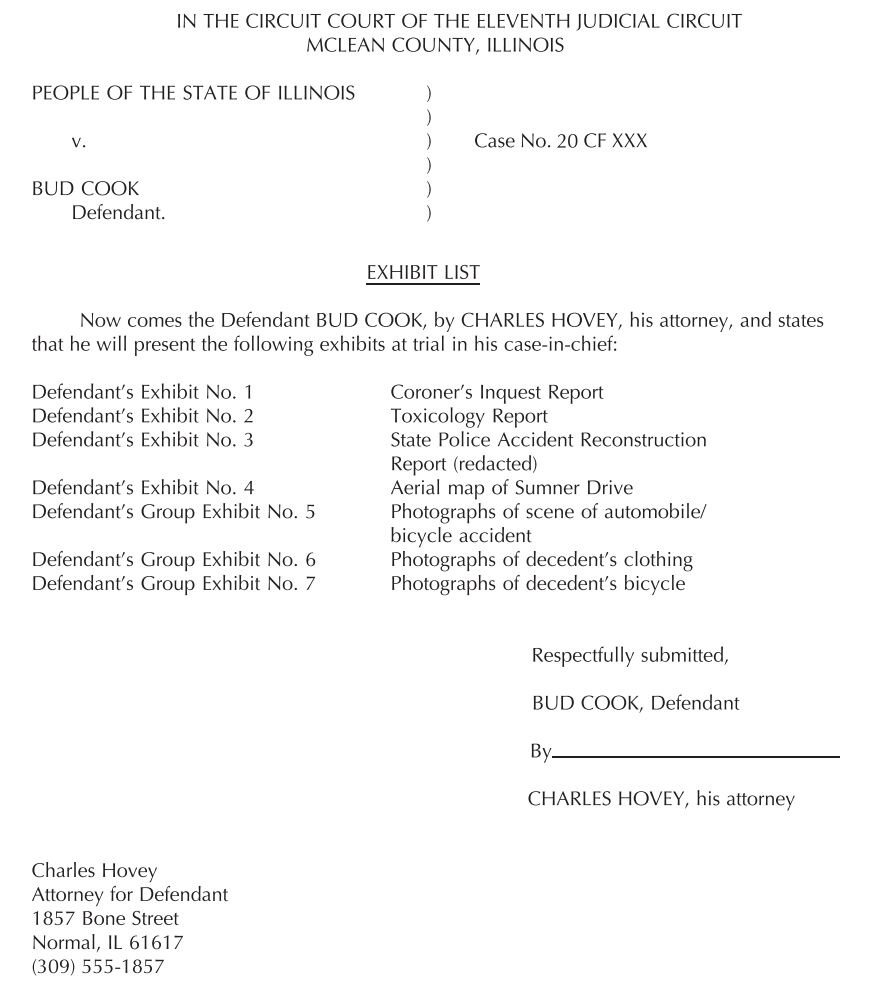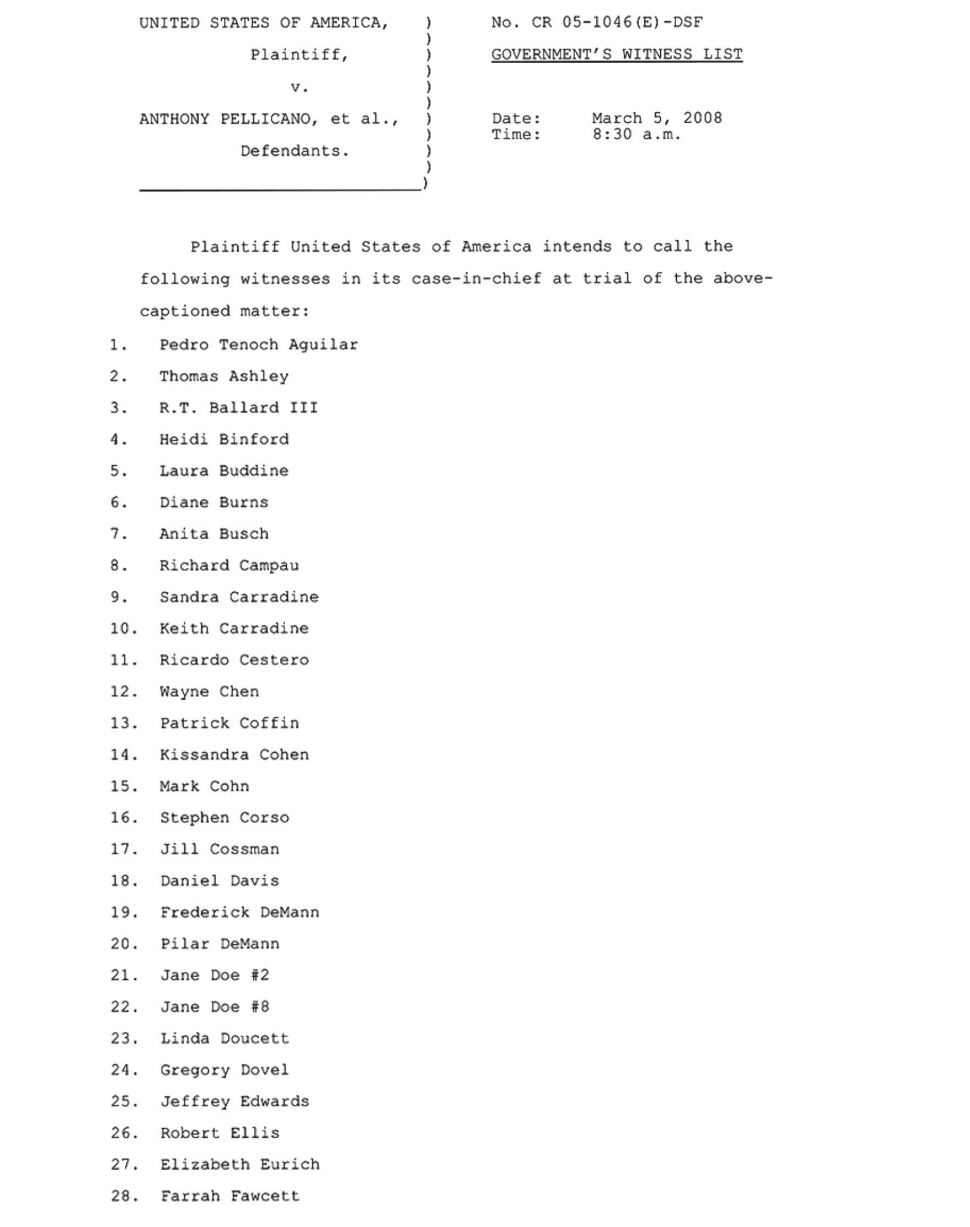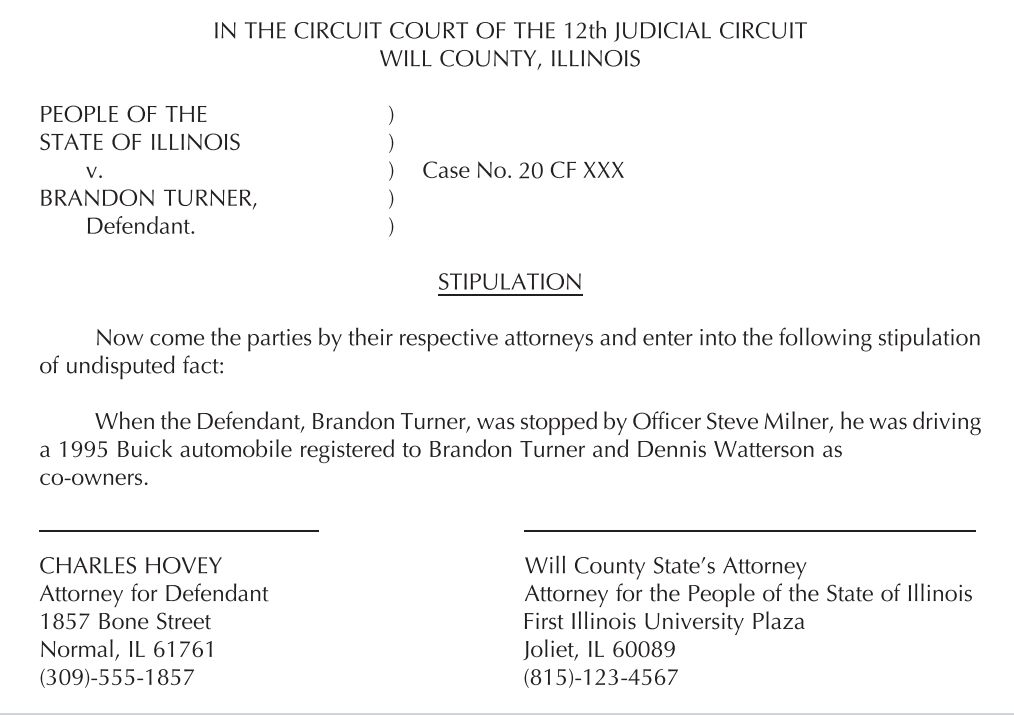PART 3 - CHAPTER 12 The Conduct of the Trial
| Jurisdiction | United States |
Chapter 12 The Conduct of the Trial
CHAPTER OBJECTIVES
After reading this chapter, you should be able to:
■ Describe what takes place during each of the stages of a criminal trial.
■ Discuss the manner in which jurors are selected and how paralegals assist in this process.
■ Explain the differences between direct examination and cross-examination, and how paralegals can assist attorneys at this stage of a trial.
■ Discuss the importance of jury instructions and how paralegals can assist attorneys at this stage of a trial.
■ Prepare post-verdict and post-trial motions.
INTRODUCTION
Having discussed the purpose of trials and the roles played by attorneys, judges, and juries in Chapter 10, and the ways in which lawyers and paralegals prepare for trials in Chapter 11, this chapter takes a closer look at how trials are typically conducted. Although paralegals are not authorized to directly represent clients at a trial, they can be an important part of the litigation team, and they often sit at the counsel table with the attorneys.
Prior to the arrival of the Covid pandemic in early 2020, trials were held in formal courtrooms in federal, state, and local buildings and were open to the public and representatives of the press.1 During the Covid pandemic period, some trials and other hearings took place virtually (with judge, attorneys, witnesses, and jurors in different locations), while others took place in courtrooms with plexiglass partitions between participants. Some courts allowed a limited numbers of masked observers practicing appropriate social distancing. Many courts continue to conduct virtual hearings for arraignments, status calls, and arguments on motions as the pandemic comes to an end.
A. THE ORDER OF EVENTS
An overview of the various stages of a typical jury trial of a criminal case is presented in Figure 12.1. Look at it now and then refer to it as you read through this chapter.
B. RULES OF CRIMINAL PROCEDURE
The procedures used in federal criminal trials are spelled out in Section VI of the Federal Rules of Criminal Procedure (FRCrP). Each state has its own, similar rules governing criminal trials. Both federal and state rules can generally be found online and are often supplemented by "local" rules. At both the federal and state levels, it is the trial judge's responsibility to see that they are enforced.
APPLICATION EXERCISE 1. Using the FRCrP and those of your state, develop a table that:
a. Compares and contrasts the portions of these two sets of rules that apply to the conduct of criminal trials.
b. Compares and contrasts the portions of these two sets of rules that apply to the conduct of juvenile court proceedings.
C. CALLING THE CASE FOR TRIAL
We begin our discussion of trial procedures at the point at which the case is formally called for trial. At this juncture, the judge takes up preliminary matters, such as scheduling and ruling on pre-trial motions. Neither witnesses nor prospective jurors are present.
The prosecutor, defense counsel, and the defendant typically report to the courtroom on the day and time that the case is scheduled. Once the case is called for trial, the judge will address preliminary matters, including the trial schedule. Because paralegals are often the liaison between the attorney and the witnesses, the day-to-day trial schedule that the judge sets at this court date is of particular importance for paralegals. If they haven't already done so, the parties provide the judge with their lists of witnesses, any stipulation of facts not in dispute, and exhibit lists.2 Paralegals are often involved in the preparation of these documents.
Items that occur only in jury trials are in italics; non-italicized items apply to both jury and non-jury criminal trials
Selection of the juryScheduling decisions made
Judge rules on pre-trial motions
Opening statementsJudge's welcome to jurors and swearing in Voir dire
Rulings on challenges for cause
Exercise of peremptory challenges
Seating of jurors and alternates
Presentation of the prosecution's case-in-chiefProsecution's opening
Defense's opening
Prosecution's first witness takes the stand and is sworn inConsideration of defense's motion for judgment of acquittal/motion for directed verdict
Direct examination of prosecution witness 1Additional prosecution witnesses called and examined.
Cross-examination of prosecution witness 1
Re-direct examination of prosecution witness 1
Re-cross examination of prosecution witness 1
Presentation of defense's case-in-chief
Defense's first witness takes the stand and is sworn inPresentation of rebuttal witnesses (following same format)
Direct examination of defense witness 1Additional defense witnesses called, sworn, and examined.
Cross-examination of defense witness 1
Re-direct examination of defense witness 1
Re-cross examination of defense witness 1
Presentation of surrebuttal witnesses (following same format)
Consideration of renewal of defense motion for judgment of acquittal or motion for directed verdict
Jury instructions conference
Closing arguments
Prosecution's closing argumentJudge's instructions to the jury
Defense's closing argument
Prosecution's rebuttal argument
Jury deliberations
Announcement of verdict
Post-verdict actions
Filing of post-trial motionsFiling of notice of appeal
Preparation and filing of pre-sentence investigation report (PSR)
Sentencing hearing
Imposition of sentence
Figure 12.1 Stages in a Typical Criminal Trial
Exhibit and witness lists are relatively easy to prepare. Usually, a case caption appears at the top of each document. The document title next appears (e.g., Defendant's Exhibits, Government's List of Witnesses), and a short introductory sentence follows. The body of the exhibit list is a chronological listing of the numbered trial exhibits along with a description of each (see Exhibit 12.1). The witness list consists of an alphabetical listing of the witnesses (see Exhibit 12.2). The attorney's signature and the address block follow the body in both types of lists.
The stipulations lists vary in format. When the stipulation is presented at the time the case is called for hearing, it is usually formatted as a standard captioned document (see Exhibit 12.3). When the parties reach a stipulation after testimony has begun, it may be handwritten on a sheet from a legal pad. In either instance, attorneys from each side typically sign the document.
Motions in limine may also be presented and decided at this juncture.3 Once the court rules on the motions in limine and addresses any other preliminary matters needing attention, the jury selection process begins.
APPLICATION EXERCISES 2. Prepare a list of prosecution witnesses for the Turner hypothetical case (see pages xxxvii-xxxviii). Assume that (1) all the faculty members of your instructor's department are the government's witnesses; (2) the case is the 30th felony case of the year filed in the federal district in which your school is located; and (3) the U.S. Attorney for your federal district is the prosecutor.
3. Draft the body of a stipulation of facts in the Marshall hypothetical case (see pages xxxviii-xxxix). The stipulation should be based on the undisputed facts: Clay Marshall is the office manager of the Van Buren Insurance Agency in the city where your school is located. He supervised Randy Jefferson and Madison Pickering, two clerks for the firm. Jefferson continues to work for the agency. Pickering used to work part time at Van Buren Insurance Agency but no longer does.
In cases in which there has been extensive pre-trial publicity, the defense attorney may decide to file a pre-trial motion seeking either a change of venue or change of venire.4 However, since either alternative involves additional costs and greater inconvenience for some of the participants, judges are reluctant to grant these requests and instead rely on voir dire to eliminate individuals who might be affected by such coverage. In high-profile cases, defense counsel may employ a public opinion pollster to determine the effect of pre-trial publicity on potential jurors.



D. JURY SELECTION
Back in Chapter 10, we discussed the constitutional basis for the right to a jury trial and how the voir dire process is designed to select an impartial jury. In this chapter, we go into greater detail about how the jury selection process works.
1. SELECTION OF JURY POOL
Prior to being selected to serve on a trial jury, people are randomly selected from lists of registered voters, licensed drivers, property taxpayers, and other public records. They are screened by a local jury commissioner who determines if they meet statutory criteria for serving on a jury.
Judges set jury trials during time periods when the jury commission will summon a pool of potential jurors to report to the courthouse for duty. Many jurisdictions now use telephone call-in numbers to inform jurors as to the specific days and times they need to report within a week or two-week period. The entire array of prospective jurors called during a specific court calendar is known as the venire.
Once prospective jurors have arrived at the courthouse, a court official sends them to a jury assembly room, where a judge or clerk swears them in and gives them general instructions about their role in the process. Court officials distribute badges or name tags to the jurors that identify them by juror number. Depending on the number of jury trials taking place, some or all of these individuals are then taken to the courtroom being used for a specific trial that is about to begin.
2. THE VOIR DIRE PROCESS
When potential jurors arrive in the courtroom, they are usually seated in the audience section, while the judge gives a brief welcoming speech and explains how the questioning will be...
To continue reading
Request your trial
